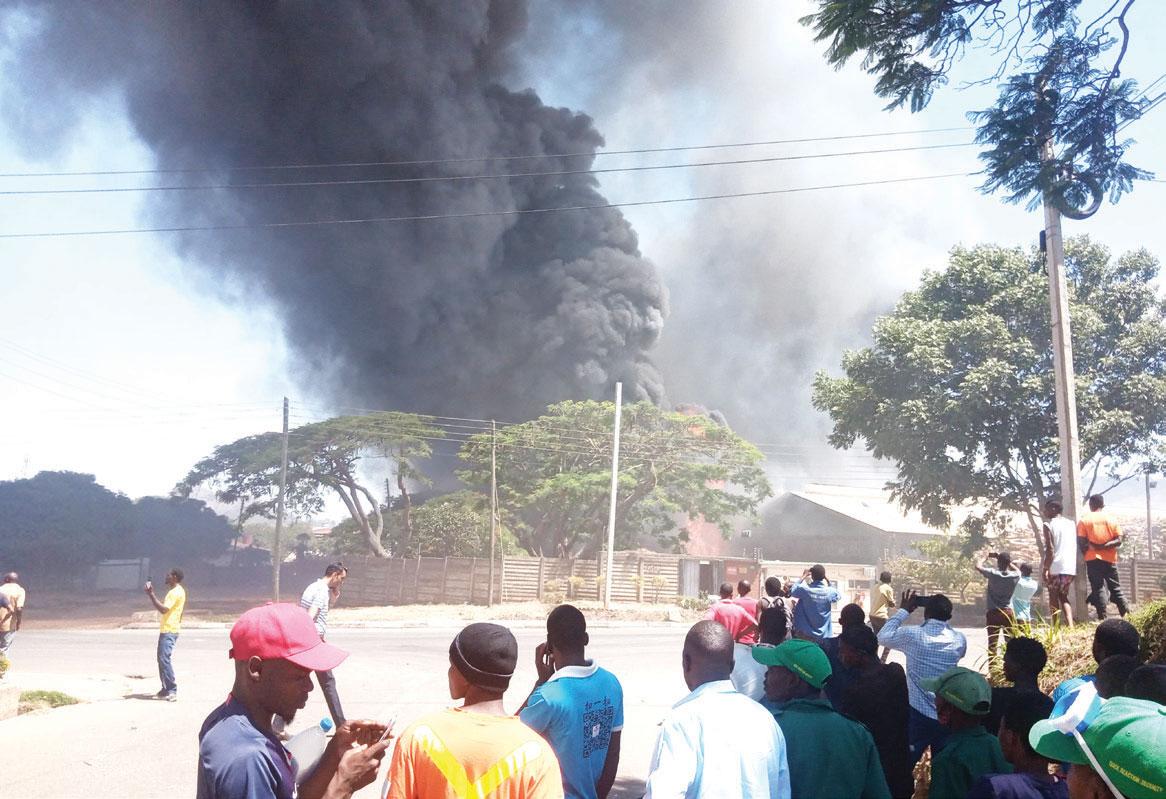Africa-Press – Malawi. Fire is good. We use it every day at household level as well as in business and employment premises. Fire can also be disastrous as it can destroy investments in a matter of hours, rendering hundreds, sometimes even thousands, jobless. Knowing the danger, common practice entails that well-resourced fire departments are a necessity in every city and town and locality but, as JAMESON CHAULUKA writes, that is not the case even in the cities of Malawi.
“Afaya sadatithandize”
[the fire brigade did not help us] is the most popular statement one hears at nine out of 10 fire accident scenes in Malawi and this is evident in the treatment fire fighters get, especially from onlookers who, themselves, do nothing but take pictures and videos for posting on social media.
“It is hard. We are there doing all we can with the little resources we have. We put our very lives at risk but it’s not enough,” says one of the fire fighters who opts not to be named because he does not speak for the council he works for.
While fire departments are hugely under-resourced in terms of fire engines, the other overlooked problem is that of fire hydrants and water reservoirs where fire engines refill in times of accidents.
For starters, Malawi’s capital, Lilongwe, only has three functional fire trucks, one in Kanengo and two in the Works Yard, which underscores the need to have water hydrants in every locality for easy refills when uncontrollable fires break out far from the stations.
Without giving specific numbers, Lilongwe City Council spokesperson Tamara Chafunya said they do not have fire hydrants in some areas and that, in areas where there are hydrants, they have low pressure, which negatively affects the actual refills.
“On hydrants, the city has functional hydrants in commercial, industrial and low density areas. Unfortunately, we do not have hydrants in unplanned settlements such as Mtandire, Chinsapo and others. Just like in residential settings, we usually experience low water pressure and this affects refills in case of a fire incident. Access to hydrants in planned residential settings is not a problem because these hydrants are in planned areas,” she says.
On the issue of inadequacy of fire engines themselves, Chafunya said this is an area where the city’s reform agenda is targeting “Procurement of three fire engines is under one of our reform areas in fire-fighting and rescue services. We plan to get finances from Development Fund for Local Authorities for this initiative.
“Both the equipment and personnel we have have to be increased for us to better manage fire incidents. Currently our strength is enhanced by support from the MDF [Malawi Defence Force] and Airport Development [Limited], who support us with both personnel and equipment on call,” she says.
The situation is worse in Mzuzu City, with one very small fire engine with the holding capacity of 1,500 litres serving the whole city. Mzuzu City Council Chief Fire Officer Precious Mandala says other fire engines are under maintenance but it is taking long to fix them because of financial resource constraints.
“In terms of response, we, as a council, are far much behind. We cannot seriously respond to major fire incidents if they occur with this engine. With the capacity of 1,500 litres, it only lasts three minutes before it runs out of water and we have to rush to nearest hydrants,” he says, adding that out of 33 hydrants in the city, only three are operational.
“The whole city has three functional fire hydrants and they are all located in the Central Business Area. The majority of hydrants have low water pressure, among other problems, such that they cannot be relied on. Areas which ought to have hydrants do not have them, which makes us cover long distances to refill the engine,” he says.
Mandala said, to improve response time to fire incidents, the city must have fire stations in road blocks, instead of having one station the whole city as is the case.
He also says the burden of covering long distances between hydrants and fire incidents can be lessened if they had a fire engine with the capacity of at least 10,000 litres.
The situation is also not that encouraging in the country’s commercial capital, Blantyre, as the council only has two operational fire engines out of seven.
Chief Fire Officer there, Prescott Sailesi, says their biggest fire engine has a capacity of 2,500 litres, which roughly works for barely 10 minutes before requiring a refill.
He says the city has 497 hydrants according to a revised geographical analysis in industries and residential areas but not all of them are operational.
“These hydrants were constructed a very long time ago; so, over 90 of them have problems and others were disturbed by our colleagues who were making roads in the city without involving us. At least now we are working together; as such, we tell them to design roads in a way that maintains our hydrants,” he says.
Sailesi also says some of those hydrants have been destroyed through carelessness of some residents of the city who throw plastic and other objects in the hydrants.
“We routinely inspect them [hydrants] because when fire breaks out we do not have to start removing these objects before we start using the hydrants,” he says. In general terms, fire-fighting in Malawi appears to be more of a joke.
Mangochi does not have a fire engine such that when fire gutted the district’s main hospital in 2019, authorities had to call for help from Zomba City, 126 kilometres away. Although this is the case, fire accidents remain one of the biggest risks in the business sector.
Eshani Products, one of the companies affected by the fire that broke out at Leopard Match Limited in Blantyre recently, lost machines, materials and products worth over K1.2 billion in the inferno, forcing it to halt operations and send home 500 employees.
The fire at Leopard Match and nearby factories raged for over six hours until the city council’s fire fighters were assisted by those from Chileka International Airport, Malawi Police Service and other well-wishers.
According to a fire expert, who also opted not to be named, there is a need for the country to have a national fire policy, instead of leaving the task of dousing fire in the hands of individual councils.
For More News And Analysis About Malawi Follow Africa-Press






